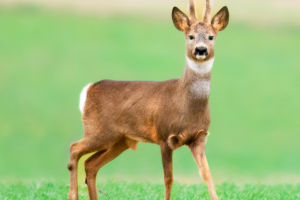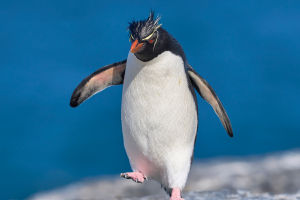The caracal is a medium-sized wild cat known for its unique appearance and agile hunting skills.
This remarkable feline is primarily found in the arid regions of Africa, West Asia, and the Indian subcontinent.
The name "caracal" originates from the Turkish word "karakulak," meaning "black ears," which is one of the most distinctive features of this animal.
Caracals have an elegant and streamlined body shape. The weight of an adult caracal typically ranges from 8 to 18 kilograms, with a shoulder height of approximately 40 to 50 centimeters. Their body is slender, and their limbs are both long and powerful, perfectly designed for their agile lifestyle.
The fur of a caracal is sandy brown or reddish brown, a coloration that provides excellent camouflage in the desert and grassland environments they inhabit. One of the most eye-catching features of the caracal is the tufts of black hair on their ears, which can be as long as 5 centimeters.
These ear tufts are not just for show; scientists speculate that they may play a role in intraspecific communication or in sensing the surrounding environment.
The caracal is an extremely adaptable animal, capable of thriving in various environments, from arid deserts and grasslands to savannas and hilly terrains. They are solitary creatures, typically traveling alone, and only appear in pairs during the breeding season.
Caracals have a large range of activity and usually become active at night or at dusk to avoid the intense heat of the day. While they can adapt to a variety of environments, caracals have a preference for areas near water, especially in arid regions.
Caracals are renowned for their extraordinary hunting abilities. Their diet mainly consists of birds, rodents, rabbits, and small antelopes. The caracal's hunting technique is particularly unique; they rely on their strong hind limbs to leap into the air with incredible speed and power, allowing them to catch birds in flight.
During a hunt, caracals are nearly silent, enabling them to approach their prey without being detected. Their night vision is highly developed, allowing them to see clearly in low-light conditions. Additionally, caracals possess acute hearing, which helps them detect prey hiding in the grass.
Beyond their impressive hunting skills, caracals are also equipped with exceptional survival abilities. In times of food scarcity, caracals can conserve energy by reducing their activity levels, and in extreme situations, they can survive by eating plant roots or small invertebrates.
Caracals also exhibit some seasonality in their reproductive habits, usually mating at the end of the dry season or the beginning of the rainy season. Female caracals will seek out a secluded location, often a crevice, cave, or dense bush, where they can give birth and raise their young.
A typical litter consists of one to four kittens, who open their eyes about two to three weeks after birth and begin living independently at around six months of age.
In human society, caracals are sometimes mistakenly perceived as dangerous animals, particularly when they occasionally prey on poultry or other small livestock. However, in reality, caracals pose a very low threat to humans, generally avoiding contact with people.
Unfortunately, the caracal's striking appearance and rarity have made it a target for illegal hunting and smuggling. In response, many countries have implemented measures to protect this unique species.
Although the global population of caracals has not yet reached endangered status, the loss of their natural habitat continues to pose a significant threat to their survival.
As human activities expand, the natural environments that caracals depend on are increasingly being replaced by farmland, cities, and roads, leading to a continual reduction in their living space.
To protect this unique cat, governments and environmental organizations are actively implementing conservation measures, such as establishing nature reserves, raising public awareness, and combating illegal trade.
The caracal is a unique and fascinating animal, a true marvel of the wilds of Africa and Asia, known for its agility and remarkable survival skills.
With ongoing conservation efforts, there is hope that this species will continue to thrive in its native habitats, ensuring that future generations can witness the beauty and grace of the caracal in the wild.


